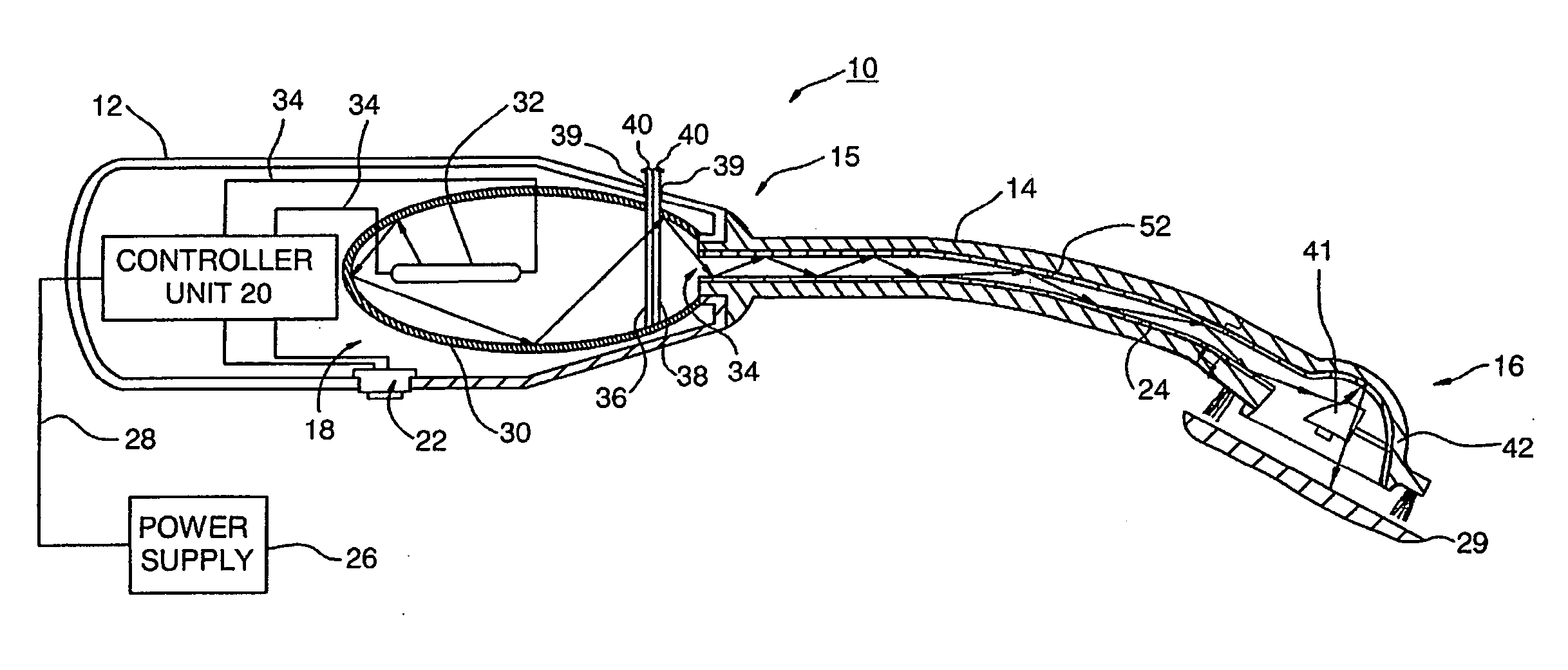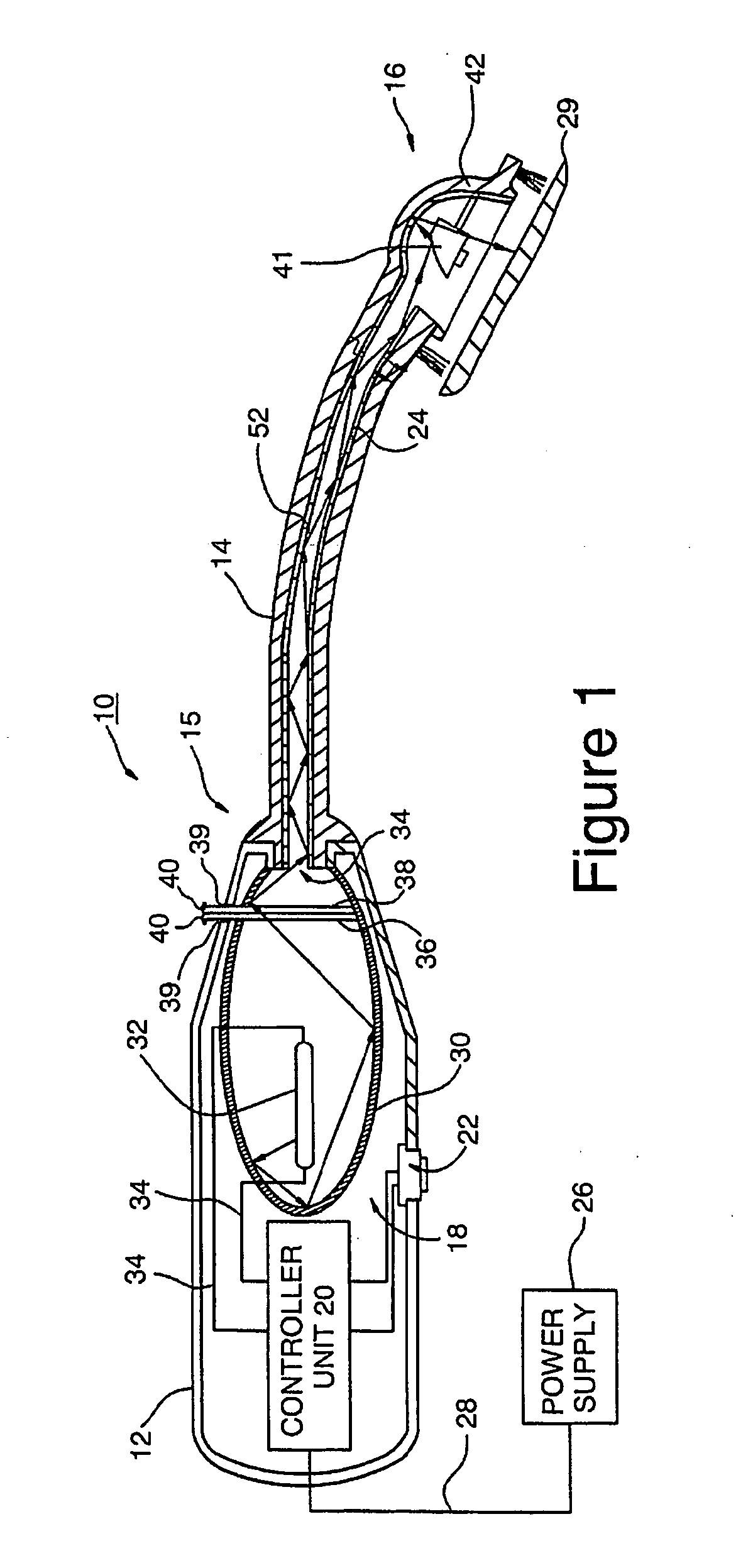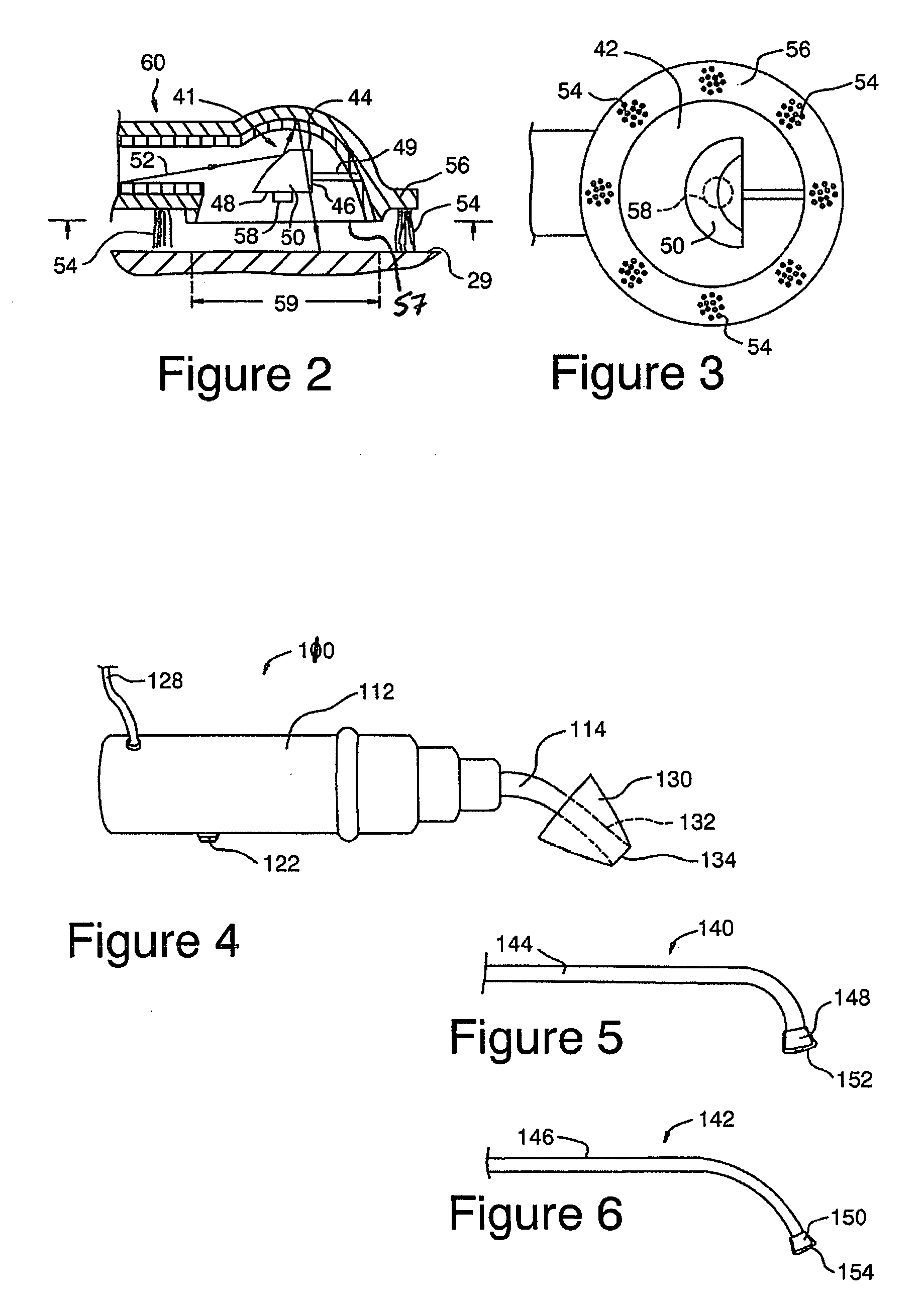Control of halitosis-generating and other microorganisms in the non-dental upper respiratory tract
a technology of halitosis and other microorganisms, which is applied in the field of treatment and instruments for the control of halitosis-generating and other microorganisms in the non-dental upper respiratory tract, can solve the problems of tooth loss, unfulfilled elucidation of the bacteria responsible for halitosis, and serious halitosis, so as to avoid problems such as antibiotic resistance, simple and effective treatment, and the effect o
- Summary
- Abstract
- Description
- Claims
- Application Information
AI Technical Summary
Benefits of technology
Problems solved by technology
Method used
Image
Examples
example 1
Treatment of Chronic Halitosis
[0172]A patient presenting with chronic halitosis is diagnosed with a bacterial infection of the tonsils and is treated, using photothermal treatment instrument 10 as shown in FIGS. 1-3, equipped with a xenon flashlight and a blue filter, transmission about 400-500 nm, with two photothermal energy pulses of about 35 msec, with a 50 msec interval, at an energy density of about 2.5 J / cm2. Two shots are applied to each palatine tonsil and two shots are delivered to the back of the tongue. In each case, light output head 16 is advanced into position with brushes 54 closely adjacent to or touching the target tissue. The procedure is repeated twice a week for six weeks. At the end of the treatment period little, if any halitosis can be detected.
[0173]FIG. 15 shows an embodiment of a treatment system according to the invention complete with a power supply, in use treating a patient. The system includes a power supply 320 shown as a “black box” which is suitabl...
example 2
Determination of Lethal Sensitization of Oral Pathogens
[0210]Suitable stain dosages for providing lethal sensitization of oral pathogens are determined in vitro by the following procedure. An objective is to determine the minimum duration of light exposure and minimum agent dilution required to achieve at least a 50% reduction in bacteria counts. Experimental tests are performed on two common pathogens using a continuously working, high intensity, red filtered halogen lamp. Red light from the filtered halogen lamp is transmitted through a flexible light guide to radiate downwardly onto petri dishes containing samples of live bacteria of species Porphyromonas Gingivalis and Prevotella Intermedia using the protocols described below.[0211]Bacteria. Prevotella Intermedia is isolated from patient sample material, identified in the laboratory using standard diagnostic test systems (Remel Inc., Lenexa, Kans., USA) and is maintained by twice-weekly subculture in thioglycollate medium (Becto...
PUM
 Login to View More
Login to View More Abstract
Description
Claims
Application Information
 Login to View More
Login to View More - R&D
- Intellectual Property
- Life Sciences
- Materials
- Tech Scout
- Unparalleled Data Quality
- Higher Quality Content
- 60% Fewer Hallucinations
Browse by: Latest US Patents, China's latest patents, Technical Efficacy Thesaurus, Application Domain, Technology Topic, Popular Technical Reports.
© 2025 PatSnap. All rights reserved.Legal|Privacy policy|Modern Slavery Act Transparency Statement|Sitemap|About US| Contact US: help@patsnap.com



